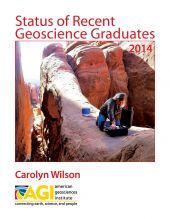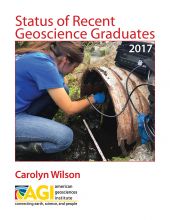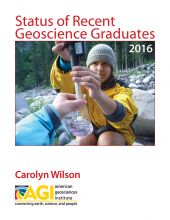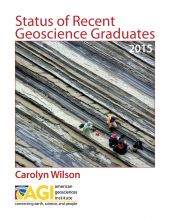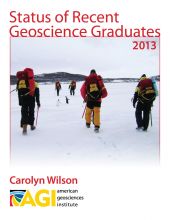The American Geosciences Institute’s (AGI) Status of Recent Geoscience Graduates 2014 provides an overview of the demographics, activities, and experiences of geoscience students that received their bachelor’s, master’s, or doctoral degree during the 2013-2014 academic year. This research draws attention to student preparation in the geosciences and their education and career path decisions, as well as examines many of the questions raised about student transitions into the workforce.
The Status of Recent Geoscience Graduates report was first released in 2013 presenting data from spring 2013 graduates. For the 2014 report, the number of participants in the AGI’s Geoscience Student Exit Survey increased by 60% compared to 2013 creating a sample size that better represents the community of geoscience graduates. However, many of the trends seen in 2013 are echoed in the 2014 report.
This report presents the results for the end user’s consideration. Two notable trends seen in this report are related to the quantitative skills and knowledge of the graduates and their plans for the immediate future. As in 2013, most geoscience graduates complete Calculus II during their postsecondary education, but the rate of graduates taking higher-level quantitative coursework drops quickly. However, in 2014, there was an overall decrease in the rate of graduates that took Statistics, even though an understanding of statistics is often necessary for graduate research. In addition, the type of school the students attended may affect their access to some of these higher-level quantitative courses beyond Calculus I.
This year also saw an increase in the rate of bachelor’s and master’s graduates planning to attend graduate school and/or still seeking employment in the geosciences. While jobs are currently available in the geosciences, many graduates appear to have struggled finding employment, which raises the concern about the preparedness of these graduates for entering the geoscience workforce upon graduation. When asked why they were looking for employment outside of the geosciences, the graduates mentioned trouble finding employers at geoscience industries willing to hire them with their little to no work experience, but the majority of graduates do not participate in an internship during their postsecondary education. Also, based on the graduation rates collected by AGI over the years, most of the graduate programs across the country are near capacity, which could increase the difficulty for these recent graduates to secure a position within these programs.
As participation continues to grow, we expect to provide more details and comparisons regionally and by degree levels. AGI is also conducting an ongoing longitudinal sur-vey that will follow these early-career geoscientists as they continue to progress in the workforce. The combination of these two studies will present a better understanding of the workforce pathway in the geosciences and enable both geoscience departments and employers to improve the educational and career opportunities for future geoscience graduates.

